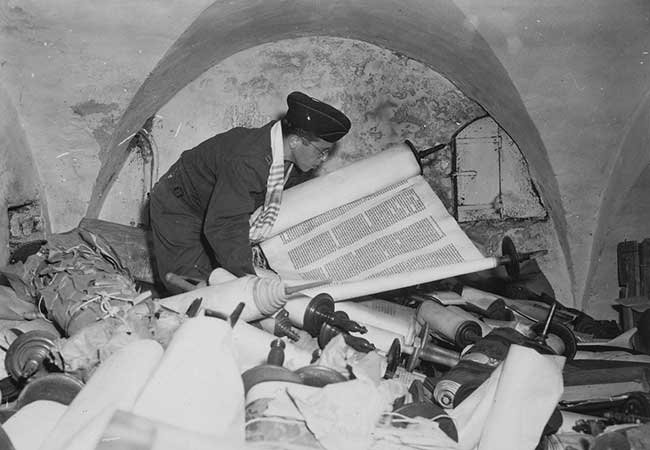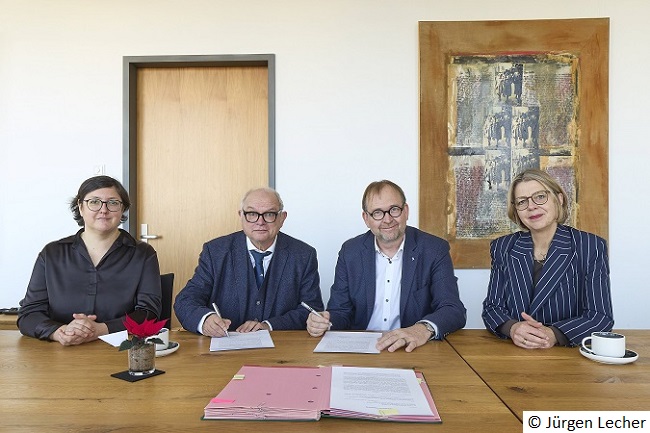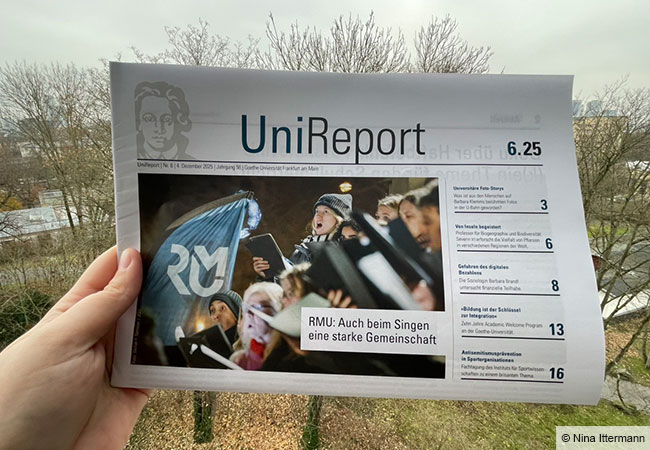How did Nazi rule and ideology take hold in Frankfurt’s local politics and municipal administration? Which measures were taken to alter and adapt the economy of the metropolis on the Main River’s shores? How were culture, education, and science coopted as part of the „Gleichschaltung“? The new volume „Frankfurt am Main and National Socialism,“ co-edited by Prof. Christoph Cornelißen and Prof. Sybille Steinbacher, addresses these questions and many more.

„When US troops crossed Frankfurt’s city limits on March 26, 1945, National Socialist rule in Hessen’s largest city finally collapsed.“ This is the first sentence of the article by Christoph Cornelißen, Professor of Modern History at Goethe University, on Frankfurt’s strategies to come to terms with the Nazi era, just published in the anthology „Frankfurt is Main und der Nationalsozialismus“. What happened before Gauleiter Jakob Sprenger and Lord Mayor Friedrich Krebs, as well as numerous Gestapo members and city officials, fled the city? A series of articles in the new historical anthology sheds light on how it all came about.
The book “Frankfurt am Main und der Nationalsozialismus. Herrschaft und Repression – Wirtschaft und Gesellschaft – Kultur und Gedächtnis” [“Frankfurt am Main and National Socialism. Rule and Repression – Economy and Society – Culture and Memory“], examines the city’s Nazi past 75 years after the end of the war. The focus is on the rise, implementation, and perception of National Socialist policies in Frankfurt between 1933 and 1945. Prof. Christoph Cornelißen and his colleague Sybille Steinbacher, director of the Fritz Bauer Institute, have edited the historical anthology.
To this day, the history of Frankfurt between 1933 and 1945 has only been researched incompletely. That is why the editors realized the book project, focusing on the enforcement of Nazi rule in various areas of municipal politics and administration as well as the transformation of the economy and society – including topics such as urban planning, cultural developments, and National Socialist image policy. The anthology also traces how the new urban government and their many helpers launched violence against outsiders of the „people’s community.“ In Frankfurt, too, Jews were the primary victims of racially motivated exclusion and persecution; almost 13,000 women, men, adolescents, and children were murdered or driven to their deaths in the Shoah between 1933 and 1945. Countless Sinti and Roma, homosexuals, and members of other groups, who often had to eke out an existence on the margins of society, suffered a similar fate. How much of an impact the Nazi regime’s propaganda had, is illustrated by the unwavering loyalty of broad sections of the population, even as bombing raids reduced Frankfurt to rubble.
In addition to a foreword by the editors, the collection also features articles by Bettina Tüffers („Die Frankfurter NSDAP vor dem Krieg“ – The Frankfurt NSDAP before the war), Tobias Freimüller („Gemeinschaftsfremd“ – Alien to the community), Heike Drummer („Stadt ohne Juden“ – City without Jews), Markus Roth („Widerstand“ – Resistance), Ralf Banken („Aufrüstung, ,Arisierung‘ und Zerstörung“ – Rearmament, „Aryanization“ and destruction), Nicole Kramer („Fürsorgerische Ordnung“ – Involuntary Order), Michael Fleiter („Die Stadt im Bombenkrieg“ – The city during the bomb war), Fabian Link („Im Einsatz für die Weltanschauung“ – On a mission for the worldview), C. Julius Reinsberg („Das Ende der Moderne?“ – The end of modernity?), and Christoph Cornelißen („Eine Stadt auf der Suche nach Erinnerung“ – A city in search of memory).
The volume also serves as volume 10 in the series Studien zur Geschichte und Wirkung des Holocaust [Studies on the History and Impact of the Holocaust], commissioned by the Fritz Bauer Institute. Moreover, it forms part of the “History of the City of Frankfurt” (Volume 5), commissioned by the Frankfurt Historical Commission. The book has been published by Wallstein Verlag. It is only available in German.
Publication: Frankfurt am Main und der Nationalsozialismus. HERRSCHAFT UND REPRESSION – WIRTSCHAFT UND GESELLSCHAFT – KULTUR UND GEDÄCHTNIS. Published by Christoph Cornelißen and Sybille Steinbacher. 500 pages, 55 illustrations, some in color. ISBN 978-3-8353-5587-3, €38









